#natural building
Text
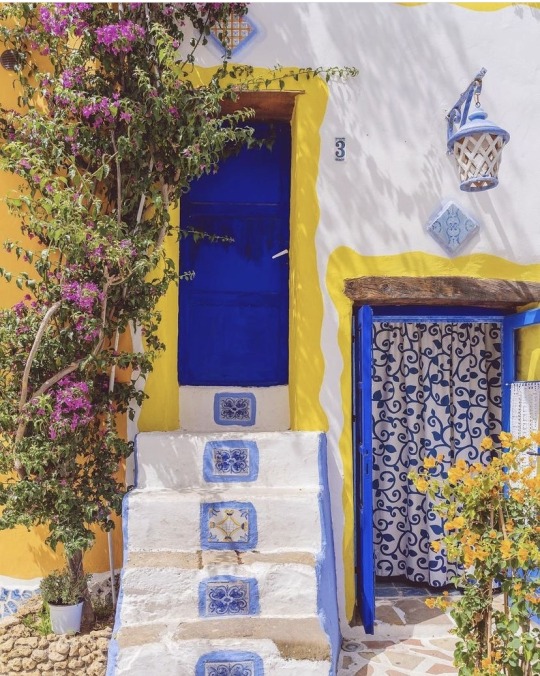
#natural design#natural living#natural building#cob house#adobe house#tiled steps#stairs#colorful living#colorful interiors#rustic living#rustic design#rustic home#bohemian living#home interior#interior design#interior ideas#interiors
152 notes
·
View notes
Text
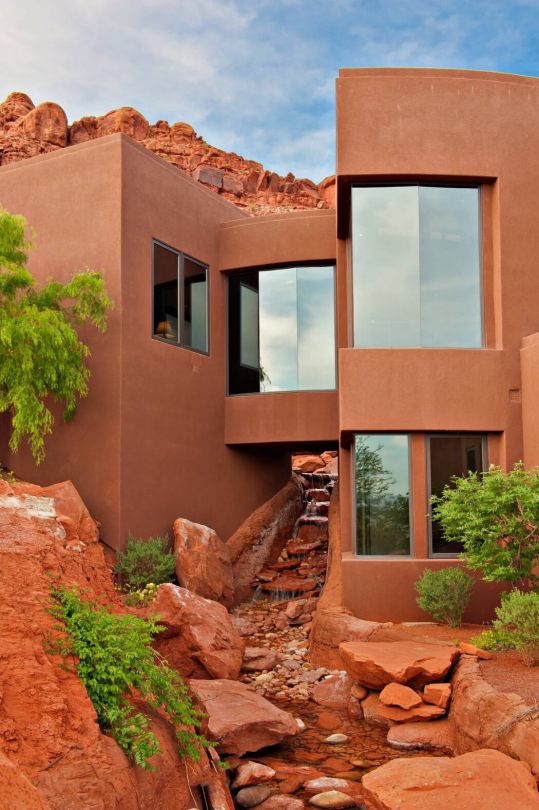
I like how they incorporated their home within the red rocks and canyon.
#red rocks#canyonlands#canyon#clay#natural home#natural building#modern design#modern home#modern buildings#home design#architecture#red#toya's tales#style#toyastales#toyas tales#home decor#interior design#december#winter#healthy living#indoor outdoor living#naturalist#nature#modern living spaces#modern architecture
59 notes
·
View notes
Text
Inspiring DIY TINY HOUSE built by HAND | NO PERMIT REQUIRED
youtube
#self sufficiency#sustainability#nature#alternative living#earthkeyper#cob#cob building#affordable living#affordable#construction#natural building#artistic#Youtube
7 notes
·
View notes
Text
Sustainable earth friendly mud houses via link on Ash’s ig story
December 14, 2022


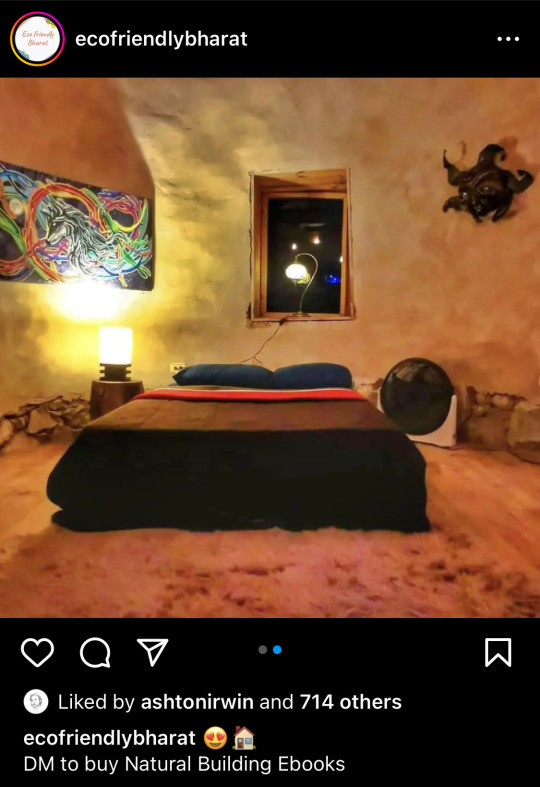
X
#sustainable#sustainable living#mud house#earth friendly#save the earth#natural building#ecofriendly house#environmental ashton#earth#sustainable homes#ecofriendly living#ecofriendly#earth building#natural house#ashton irwin ig story#december 14#2022#ecofriendlybharat#environmental#environment#hemp house#cob house#straw house#ecobuilding#save our earth#5sos#ashton irwin#ashton 5sos#ashton fletcher irwin#ai
23 notes
·
View notes
Text
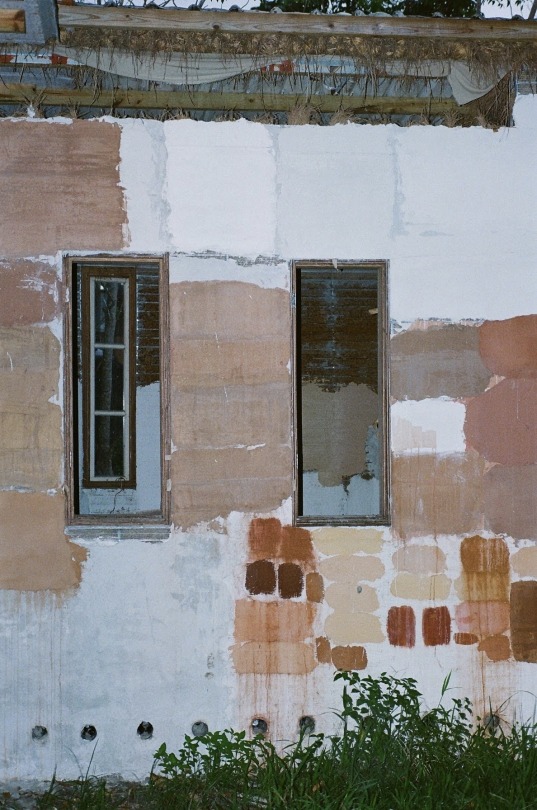
Testing the color of mineral pigment.
3 notes
·
View notes
Text
Hempcrete Finally Aproved by Building Code
More than three decades ago a radically new building material started gaining popularity - in Europe: The benefits of hempcrete (a.k.a. hemplime) include exceptional thermal performance, highly effective transmission of humidity, resistance to mould, and acoustic insulation. It is also fireproof, and sequesters more carbon than its industrial production requires. Given all these incredible benefits, it may sound surprising that until now hempcrete has been not been permitted in US building codes. This had to do with hemp being considered an illegal plant. With the legalization of cannabis for medical and even recreational use in many states, the US is finally ready to include hempcrete as a permitted material in its residential building codes.
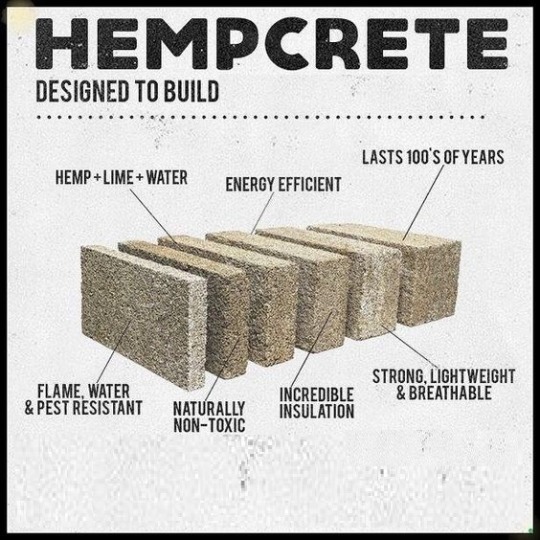
image source
What is Hempcrete?
When separating the woody inner portion of the hemp stalk from the main fiber, we get what's called shives. They are also very fibrous, but unlike the main fiber, which is threaded into rope, shives are coarse, broken pieces. This material is what makes up the bulk of hempcrete. The other part is a limestone binder, using either hydrated or hydraulic lime. This is an industrial product, requiring the calcination of lime at very high temperatures in kilns, similar to the production of cement for concrete.

image source
After the hemp shives are mixed with the lime binder, and combined with the addition of water, the curing process starts. Depending on the type of binder, this could take up to a month. For this reason, the hempcrete is usually molded into blocks, similar to cinder blocks. In comparison, however, hempcrete tends to be lighter, and less brittle than concrete.
An Alternative to Concrete?
Before I continue comparing the characteristics of hempcrete to concrete, I want to get its most important drawback out of the way: Hempcrete has about 5% of the compressive strength of residential grade concrete. This means, it is never meant to be used as a structural material to bear great loads! However, excluding this main disadvantage, hempcrete outperforms concrete in so many other aspects, that it would be a waste dismissing this amazing material for its mere structural weakness.

image source
First of all, hempcrete is not only highly insulative, but it also has a good thermal mass. Normally these would be contradictory properties, since most other materials with plenty of thermal mass tend to be poor insulators, and vice versa. Hempcrete is a great exception to this rule, due to its efficient R value of between 0.67/cm (1.7/in) and 1.2/cm (3.0/in) and a specific heat capacity of between 1000 J/kg K to 1700 J/kg K. At the same time, hempcrete "breathes", meaning it is great at transmitting humidity, keeping the interior air dry, which creates a comfortable warm sensation.
Other beneficial attributes of hempcrete are that it is fireproof, resistant to moulds, and is highly effective at insulating against acoustic disturbances. Its most notable feature, however, has to do carbon sequestration, making it highly interesting for modern applications, as we are facing an overabundance of carbon in our atmosphere.
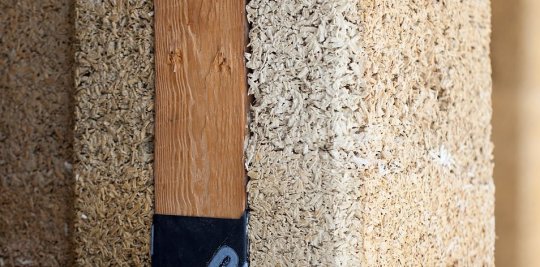
image source
Carbon-neutral... or Carbon-negative?
Even before it is turned into hempcrete, the hemp plant is already highly effective at taking up carbon from the atmosphere. At 15 tons of CO2 per hectare it does this much faster than any forest or commercial crop, while it is fast growing and doesn't require much care or delicate conditions. So growing hemp is already a great way to combat CO2, but hempcrete takes this carbon sequestration a step further.
In its natural cycle, the hemp plant stops taking up carbon once it dies. Sure, by that time it will likely have reproduced, and its offspring can continue the good work, but in the form of hempcrete even the dead hemp plant can continue this process thanks to the lime binder it is mixed with. Due to the carbonation process, the lime continues absorbing CO2, not only during its curing phase, but throughout its entire existence. The amount of this is estimated around -1.6 to -79 kg CO2e/m2.
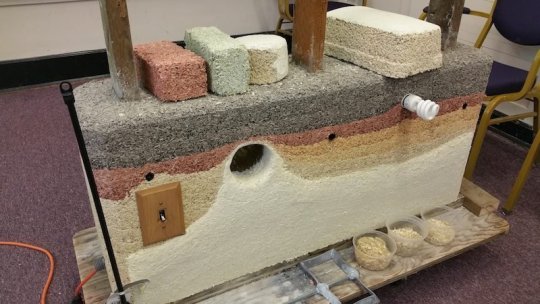
image source
This means that even though the production of the lime binder involves a good amount of carbon emissions, it is all made up by the joint effects of growing hemp and converting it into hempcrete. So you could say that hempcrete is not only a carbon-neutral building material, but it is in fact carbon-negative, removing more carbon from the atmosphere than it has put into it.
Time to Start the Future?
Given its amazing properties, and time tested practicality in Europe, there are many ambitious projects related to hempcrete. One such proposed application are the Urban Sequoias, enormous high-rise buildings that are supposed to sequester 1,000 tons of CO2 per year, about the amount of 48,500 trees. Although no Urban Sequoia has been built so far, the technology is highly promising.

image source
Also, now that the United States has incorporated hempcrete as a permitted material in its 2024 International Residential Code, it can be expected that this it will find further appeal and acceptance among builders, architects, and engineers in far reaching applications.
Sources: 1, 2, 3, 4, 5, 6, 7
10 notes
·
View notes
Text
On Being Somewhere
Wrote a little bit about how the contrast between SW and NW springs is allowing me to see things more clearly. Also some good links on foraging local weeds out of your yard, recipes, and this great video from the Nito Project:
youtube
#natural building#arizona#pnw#spring#mountains#clay#the canelo project#localfood#place#essays#oregon#Youtube
3 notes
·
View notes
Text
Cabin insulation #2
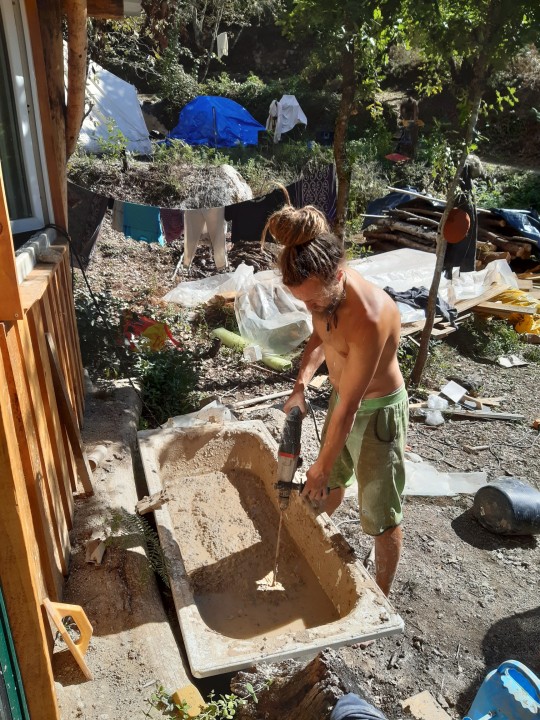

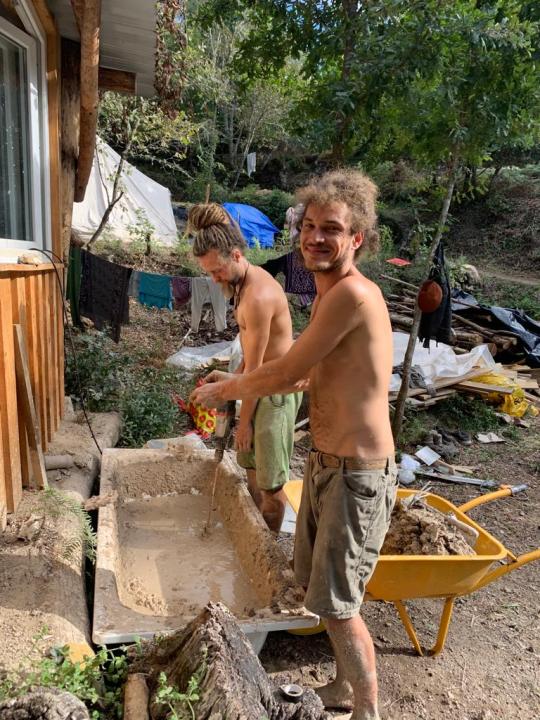
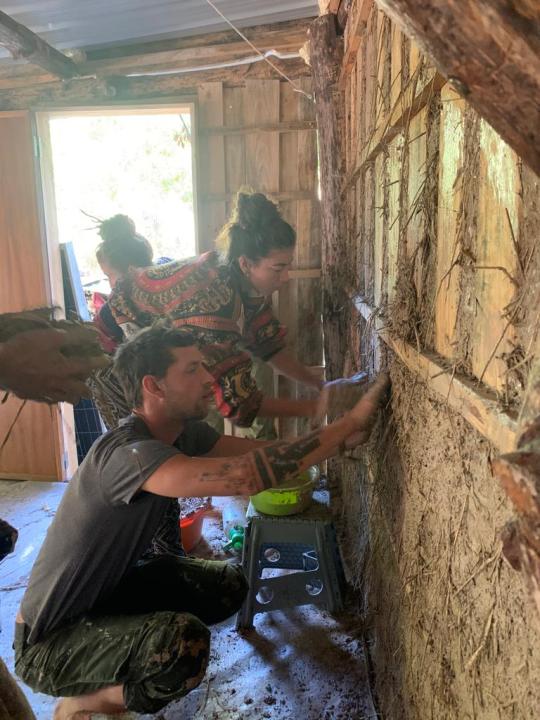
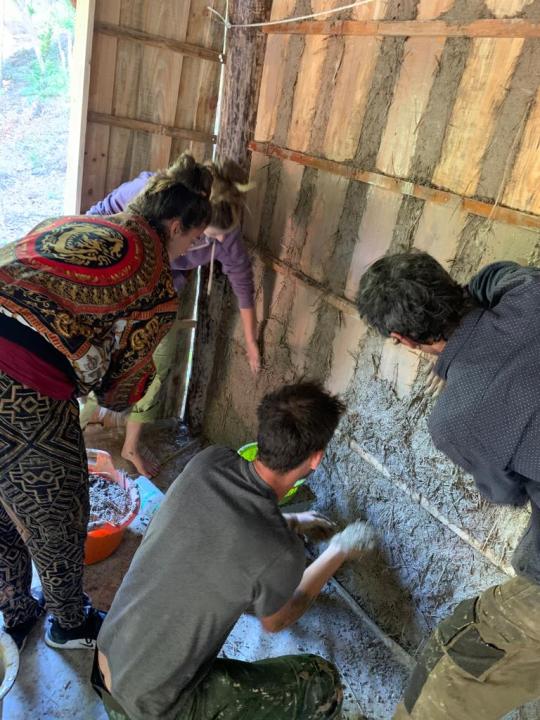
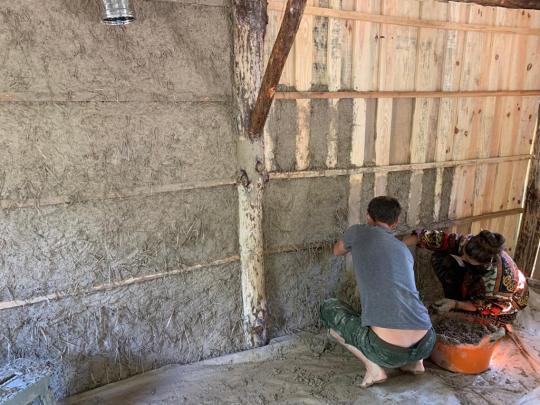
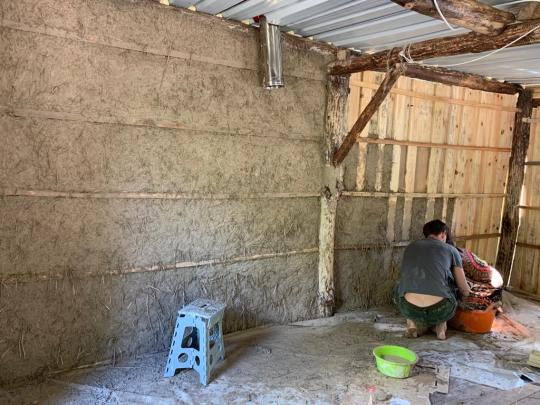

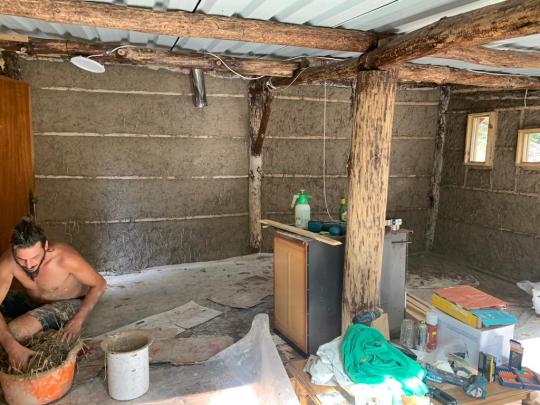
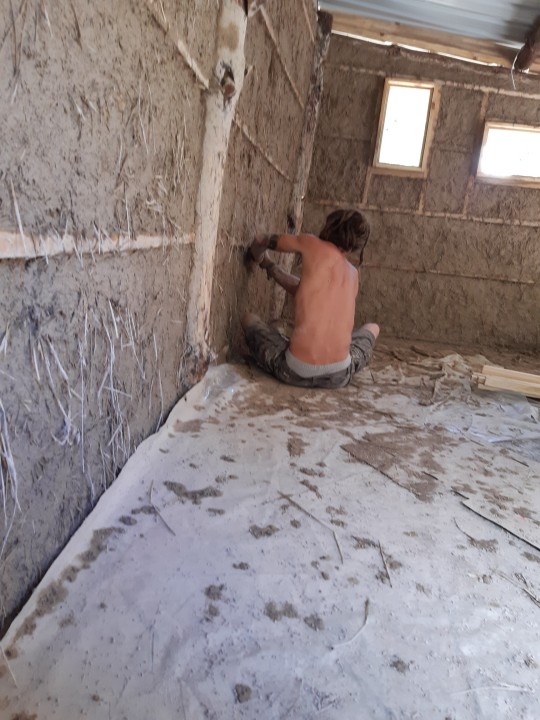
After preparing for a few days, the big day came. Friday we picked up our clay teacher Daniele and we invited many our friends to help us out this day.
After an early breakfast we started to make the first mixture. 2 buckets of clay, 7 buckets of sand and as much straw as you feel. The first part ist stomping it on the tarp. Its fun but its also quite tiring.
The mixture we filled in buckets and brought it in the cabin where always around four people or more plastered the walls. Meaning to make a mud pancake in your hand, smashing it on the wall and patting it on. And all of this all day long.
We feel so blessed, that so many people showed up. So it was possible to rotate all the jobs and even finish the first layer of insulation.
Of course we feed our helpers with Tajin but even our helpers brought energyballs and more to make the day even more amazing!
Im left after this day with a lot of gratefullness to all the people and motivation for the coming projects.
The insulation is not finished yet, but it needs to dry for a week before we can start the next layer. Until then we have to fill gaps as they open and fire the woodstove in the cabin.
To see the final look and how it went with the final plaster, come by in a week.
See you soon,
Tammy
4 notes
·
View notes
Text
Balewatch strawbale house plans
If you've ever been thinking about strawbale building and tried googling "straw bale house plans", you've probably gotten linked to Balewatch.com. Unfortunately, if you were searching this in the past decade, that brought you to a dead website.
I finally had the (obvious) idea to check the Wayback Machine today and found an archived copy! It looks like circa 2013, the site owner (Robert Andrews) was trying to sell the site. That didn't happen, and presumably he's either passed away or retired since - I wasn't able to find any information.
But without further ado, I wanted to look at a few of his plan sketches at you can find at the Wayback link above. The actual plans can no longer be acquired, but the sketches are still an interesting study.
He's listed the plans from smallest (140 sq ft) to largest (10,000). I'm just gonna look at a few with ideas I liked in the 700-1300 range.
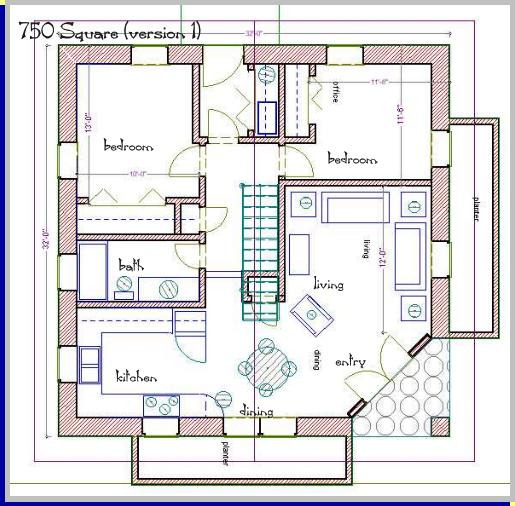
(750 Square) - oh look, a plan with a basement!! the kitchen and living areas are *almost* separate, the thing I want most in life. I think this might be the most intriguing of the lot, personally, though I don't love how the dining table ends up right in the way of the stairs.

(812 Square) - here's another plan that's almost something I could use. The weirdly shaped hallway is an interesting space-saving idea, but I think it puts all the doors so close together that actual construction would be a nightmare.

(895 Spiral) I'm not saying this is a good design for the owner-builder. It isn't. But it's fun to look at.
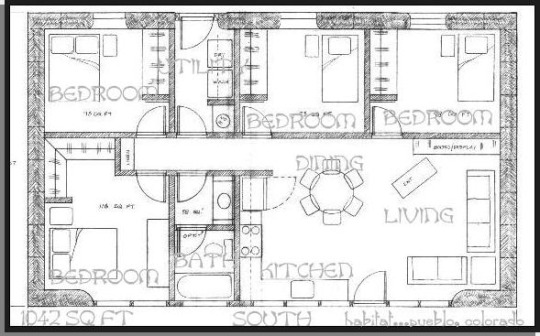
(1042 Habitat) This plan doesn't meet any of my design criteria, and clearly has succumbed to the early-passive-solar design mistake of excessive south-facing windows. But it's a fascinating plan nonetheless. 4 bedrooms in 1000 square feet! Absolutely wild.

(1135 Ranch) Much like the plan above; I find this interesting mostly for how much he's managed to squeeze into the design, not because the arrangement would work for me. Definitely another door spacing issue in this one around the bedrooms.
2 notes
·
View notes
Text

Flashback to México, 2016 when I first came into contact with natural building. The technique was cob - a mixture of clay, sand & straw and remains one of my favorite ways to build to this day.
instagram
I documented the experience in a zine I had at the time which was my collage-travel-log of woofing in central America.
Soon after I met Jona who taught me a lot more about building with Earth & many other things. Together we embarked on a long long journey which ever continues!
After a few year break we began again to build with cob to improve the wood stove we use to heat our house - it is still a work in progress but you can see how it is going in the last two pics.
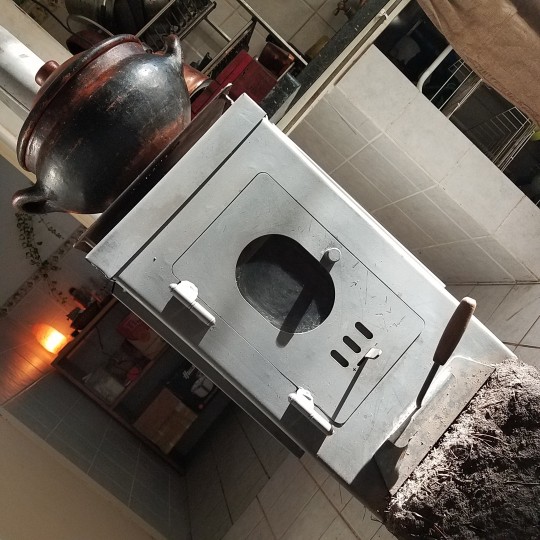
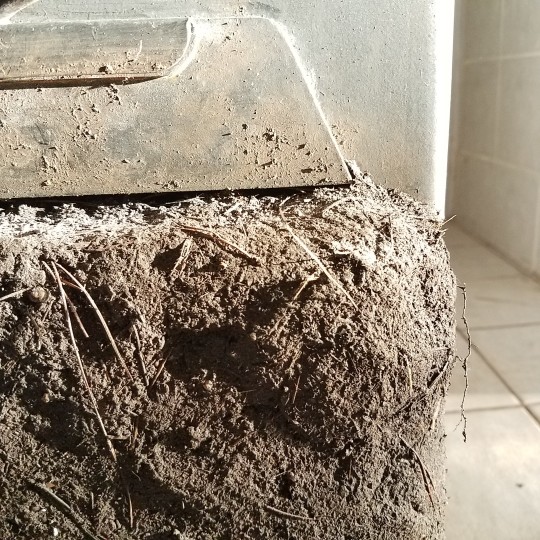
We are dreaming of building a house out of cob & other techniques 💚🏡💚 and until then are working on little projects like this one.
Have you ever built with cob? Let me know about your experiences!
#natural building#cob cottages#building with cob#bioconstruccion#bioconstrução#working with nature#zines#nature zine#Instagram
4 notes
·
View notes
Text




obsessed with this genre of images
32K notes
·
View notes
Photo

Retaining Walls New York
Design ideas for a mid-sized mid-century modern backyard landscaping.
0 notes
Text
youtube
Build a Bulletproof Home for Almost No $
#natural building#off grid#affordable living#alternative living#alternative construction#self sufficiency#Youtube
3 notes
·
View notes
Text
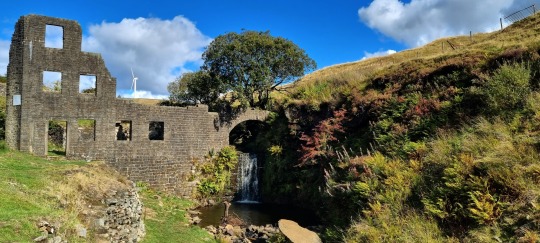
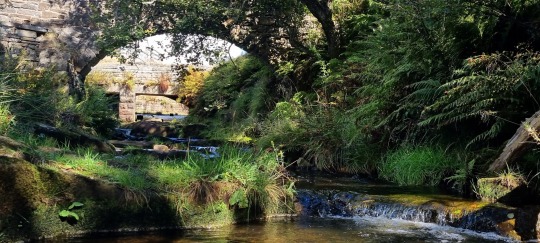
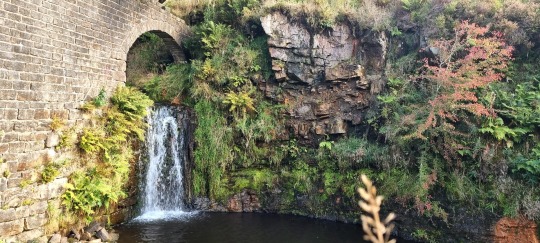
Mill ruins from 1786
#mine#nature#england#countryside#photography#ruins#mill#architecture#history#industrial revolution#rural#nature photography#buildings#river#waterfall#plants#stream
5K notes
·
View notes
Text
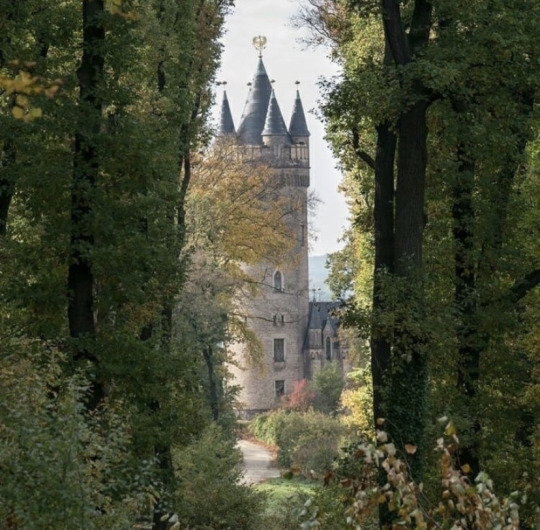



𝘵𝘩𝘦 𝘤𝘢𝘴𝘵𝘭𝘦 𝘩𝘪𝘥𝘥𝘦𝘯 𝘪𝘯 𝘵𝘩𝘦 𝘧𝘰𝘳𝘦𝘴𝘵…
#moodboard#forest#forestcore#aesthetic#lake#flowers#trees#nature#naturecore#river#garden#cottagecore#architecture#cozy#fairycore#building#summer#adventure
15K notes
·
View notes